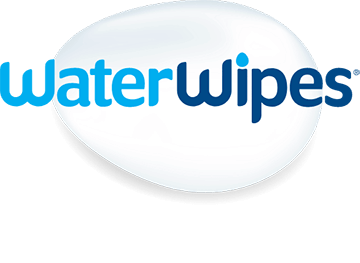What helps premature babies’ skin?
When caring for your preemie baby at home it’s important to pay extra attention to their skin.
Nappy changes
Changing a premature baby’s nappy can be upsetting for the baby, as it requires removing some of their clothes which can make them feel cold. Remember to reassure them with calm, slow movements, and soothing words.
Only change their nappy when it needs changing to avoid unsettling them.
Support your baby in a comfortable position.
Remove their dirty nappy carefully so you don’t rub or scratch their skin.
Draw your baby’s feet together and flex their legs towards their body.
Clean and dry the skin in and around the nappy area with a gentle and fragrance-free wipe or cotton wool and water.
Gently and carefully put a fresh, clean nappy on. Don’t fasten it too tightly.
How often should you bathe a preemie baby?
You don’t need to bathe a preemie baby every day – once or twice a week should be enough. Just make sure you’re cleaning them thoroughly with every nappy change, and dressing them in soft, natural materials.
Bathing and drying
Bathing a premature baby is a lot like a full-term baby, but you’ll need to be extra careful with their delicate skin.
Don’t add any products to your baby’s bathwater as this could irritate their delicate skin.
Make sure the water is at the right temperature – around 37 to 38 degrees Celsius.
Undress and clean your baby’s nappy area before putting them in the bath.
Keep them covered until it’s time to put them in the water so they don’t get cold.
Lower your baby into the water slowly, supporting their head and bottom until they’re in the water. Allow their feet to touch the wall of the bath before carefully removing your hand from under their bottom. Support their head throughout bath time.
Gently wash their skin – it can help if you and your partner do this together.
Once the baby is clean, lift them out of the water gently and wrap them in a soft towel. Gently dry their skin without rubbing.
When do premature babies get their skin colour?
Your preemie baby’s skin may look different from full-term babies. If they’re born at 36-37 weeks they will most likely look like a smaller version of a full-term baby, but if they’re born earlier their skin may look:
Wrinkly or loose
Fragile
Translucent
Red
Gelatinous
Some parents might worry about how their baby’s skin looks, but there’s no need to panic. It looks this way because their skin would have continued to develop in the womb. Over time their skin will continue to change, and in a few weeks, the colour will look like that of a full-term baby.
How Larissa dealt with Jackson’s premature baby skin
Larissa Lawrence endured a pregnancy and premature birth that would be a mother’s greatest fear, yet due to the incredible work of the Neonatal Intensive Care Unit (NICU) and the support of Miracle Babies Foundation and WaterWipes, Larissa and her partner can now continue their journey of parenthood with their healthy baby Jackson.
Each year in Australia around 27,000 babies are born premature. Having a newborn baby is already an overwhelming experience, and if your baby is born premature this can make the first few weeks an extremely emotional and traumatic experience.
When Larissa and her partner found out they were expecting twins they knew their journey was going to be harder than they thought, however, nothing could have prepared the couple for what was to come. Just 25 weeks into Larissa’s pregnancy, one of the twin boys sadly passed away. This was an incredibly difficult and emotional time for the couple.
“Just as we were coming to terms with the loss, I went into labour with his brother at 27 weeks,” said Larissa.
Larissa then spent the next 90 days in the NICU with her newborn baby Jackson. He had a positive NICU experience growing stronger each day, and after one month Jackson came off CPAP and went onto high-flow oxygen. Soon after, he was breathing by himself.
“I found a lot of positives that went along with our NICU experience. We were taught so much about how to look after our baby, which was a big advantage as first-time parents,” said Larissa.
“They taught us the proper ways to bathe him, check his temperature, and most importantly how to change his nappy. The main difference I noticed was they only use soft disposable towelettes with plain water instead of baby wipes.”
It was after the couple returned home with Jackson that he received his first nappy rash. His skin was extremely sensitive and his parents hated seeing Jackson’s skin looking so sore, so Larissa checked with the nurse to see what the best cure for nappy rash was.
“The nurse said the best way to help was to use cotton wool and water, however, this felt impractical when changing countless nappies a day,” said Larissa.
According to Robert Guaran, Neonatology Advisor NSW Perinatal Services, “a newborn baby’s skin does not have the barrier layers of cells of older children. Parents should avoid chemicals, including fragrances, that may be directly absorbed across their baby’s sensitive skin. This is especially important for Premature babies.”
Larissa knew to avoid certain baby products including baby wipes as they contain harsh chemicals, particularly for Jackson’s sensitive skin. It was when Larissa received a Miracle Babies NICU Survival Pack containing WaterWipes that she found a solution to her newborn’s nappy rash.
“I’m so grateful to WaterWipes and Miracle Babies for providing a practical solution to Jackson’s sensitive skin.”
WaterWipes has teamed up with Miracle Babies Foundation to provide wipes suitable for newborns as part of Miracle Babies’ NICU Survival Pack. These packs are provided to families in participating hospitals to equip parents with vital tools and resources for premature babies.
WaterWipes are the world’s purest baby wipes and have been carefully designed to be gentle on babies’ sensitive skin. They provide gentle cleansing for the most delicate newborn skin and are so gentle they can be used on premature babies.
Miracle Babies Foundation is Australia’s leading organisation supporting premature and sick newborns, their families, and the hospitals that care for them. Since 2005, Miracle Babies Foundation has been passionate in developing and providing vital programs and resources to support and enhance a family’s experience from a threatened pregnancy, hospital journey with a premature or sick newborn, the transition to home, and beyond.
“We are proud to partner with WaterWipes on achieving better, healthier outcomes for premature and sick newborns and their families. WaterWipes’ commitment to providing pure, gentle, and effective cleaning for the most delicate skin is very important to the families we support as a premature baby is extremely vulnerable. The simple ingredients in WaterWipes can be very reassuring. With so many concerns and things to think about, it’s important that parents who have had a premature baby feel confident that they are doing the best for their baby,” Kylie Pussell CEO and Co-Founder Miracle Babies Foundation.
FAQS
When should you start skin to skin for premature babies?
The World Health Organization (WHO) advises skin to skin contact – also known as kangaroo mother care – immediately after birth, before any initial period in an incubator. This helps the mother and baby to bond and can also help improve lactation.
How long should you do skin to skin with a preemie?
The WHO also recommends skin to skin contact in a sling or wrap for as many hours as possible. This can help with temperature regulation and improve breastfeeding.
What is the most common neonatal skin condition?
The most common skin condition in neonatal babies is erythema toxicum neonatum. It’s a benign and asymptomatic skin condition that only occurs in newborns, affecting 30-70% of babies.
What are the most common skin abnormalities in neonates?
The most common skin conditions in newborn babies are:
Desquamation
cradle cap
milia
miliaria
neonatal cephalic pustulosis
erythema toxicum neonatorum
transient pustular melanosis
References
https://www.enfamil.com/articles/premature-baby-development-process/
https://www.verywellfamily.com/protect-premature-baby-s-skin-4135015
https://www.saintlukeskc.org/health-library/skin-color-changes-newborn
https://www.aboutkidshealth.ca/Article?contentid=455&language=English
How we wrote this guide
The information in this guide is based on various parental and medical sources including St Luke’s, Raising Children and the National Library of Medicine.

